Comprehensive Guide to Book Binding Types:
Choose the Best for Your Printing ProjectDiscover the best book binding methods for your printing project with Printing Partners. Whether you're creating a booklet, novel, or premium hardcover, choosing the right binding is crucial for functionality and aesthetics. Our guide explores popular binding options, their advantages, disadvantages, and ideal use cases to help you make an informed decision. Request a free estimate today!
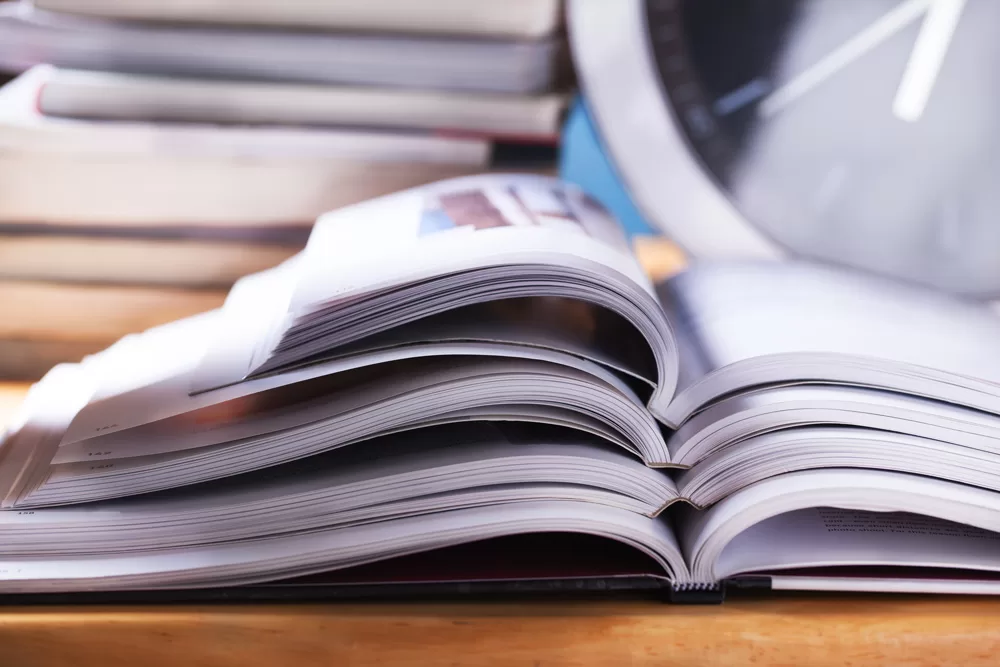
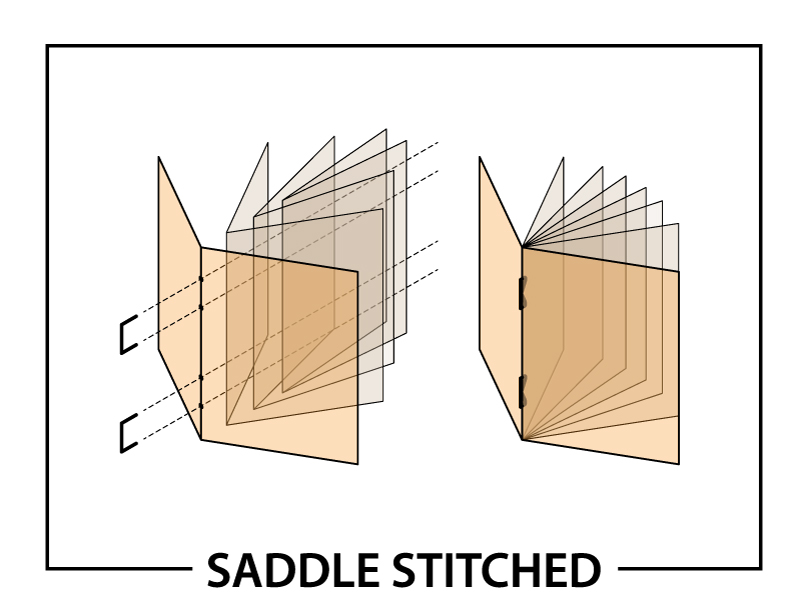
Saddle Stitch Binding
Saddle stitch binding is a cost-effective method where pages are folded in half and stapled along the spine, ideal for smaller publications like brochures and magazines.
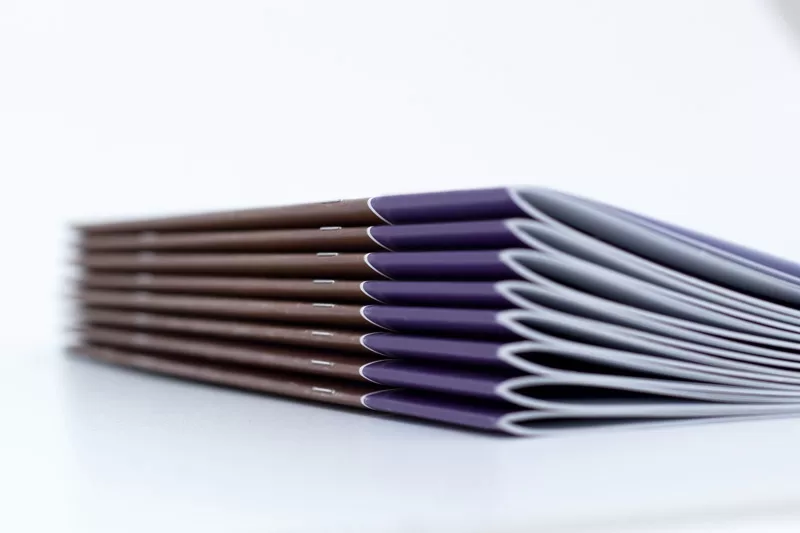
Advantages:
-
Cost-Effective: One of the most economical binding options.
-
Quick Production: Fast turnaround, perfect for tight deadlines.
-
Lays Flat: Easy to read and display.
Disadvantages:
-
Page Limitation: Best for up to 64 pages.
-
Page Count Specificity: Total pages must be divisible by four, which may require blank pages.
Saddle Stitch Is Best For:
Brochures, newsletters, magazines, and booklets with up to 64 pages.
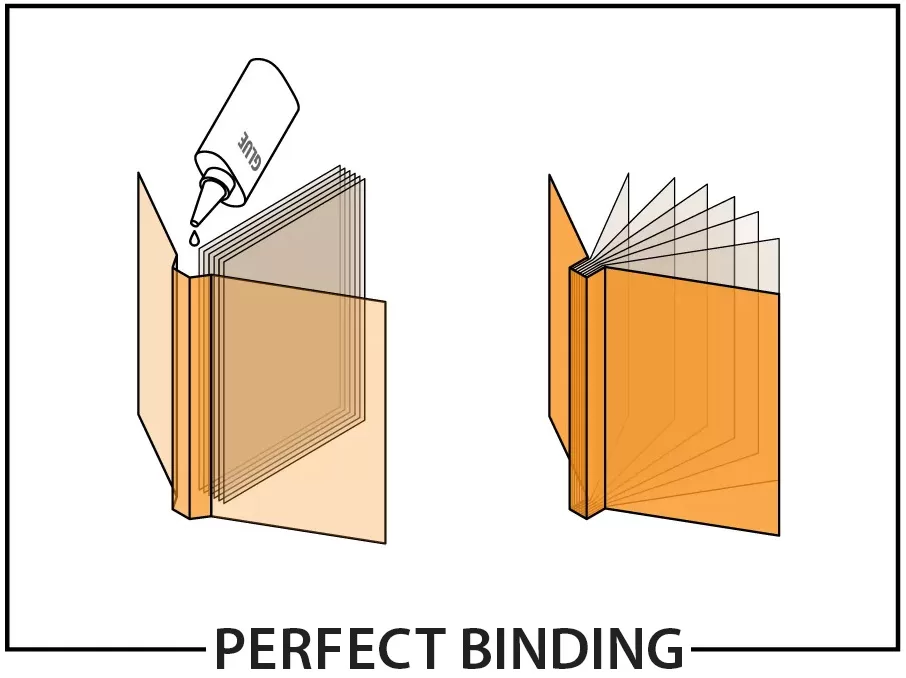
Perfect Binding
Perfect binding, also known as paperback binding, involves gluing pages to a flexible spine with a paper cover, offering a professional look for novels and catalogs.
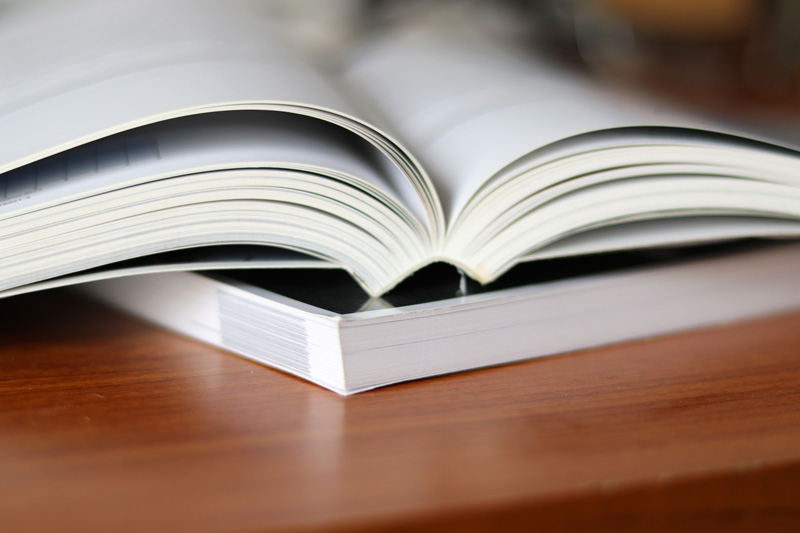
Advantages:
-
Professional Appearance: Smooth spine suitable for printed text or designs.
-
Cost-Effective: Good value for various page counts, especially higher volumes.
-
Versatile: Suitable for novels, manuals, and coffee table books.
Disadvantages:
-
Does Not Lay Flat: May cause spine wear if forced open.
-
Design Considerations: Requires careful planning for graphics across two pages.
Perfect Bound Binding Is Best For:
Novels, magazines, catalogs, and trade books with 24+ pages.
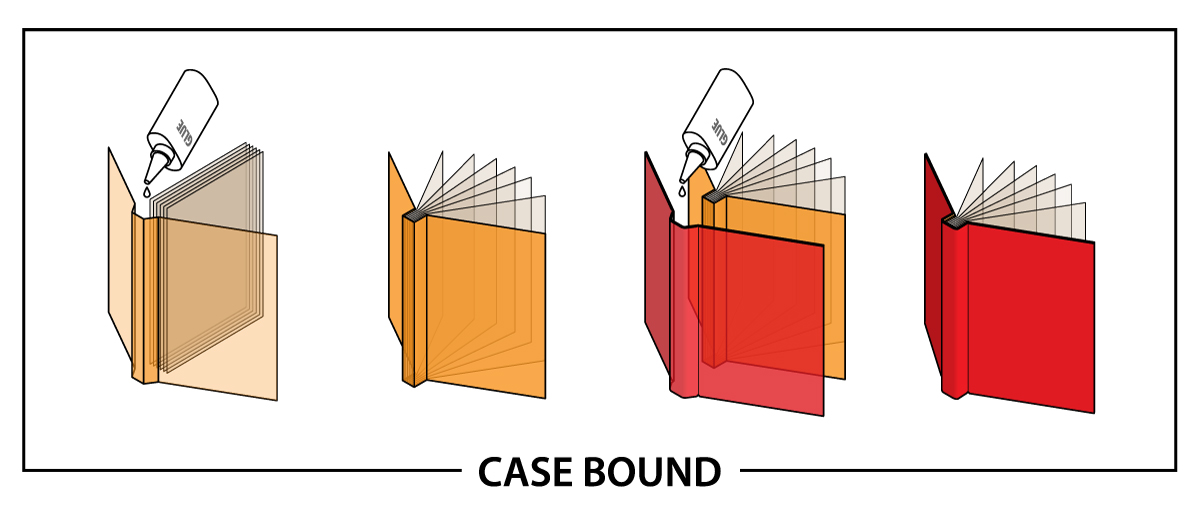
Case or Edition Binding (Hardcover Binding)
Case binding, or hardcover binding, involves sewing pages and attaching them to a durable hard cover, perfect for premium, long-lasting books. Learn more about Case Binding.
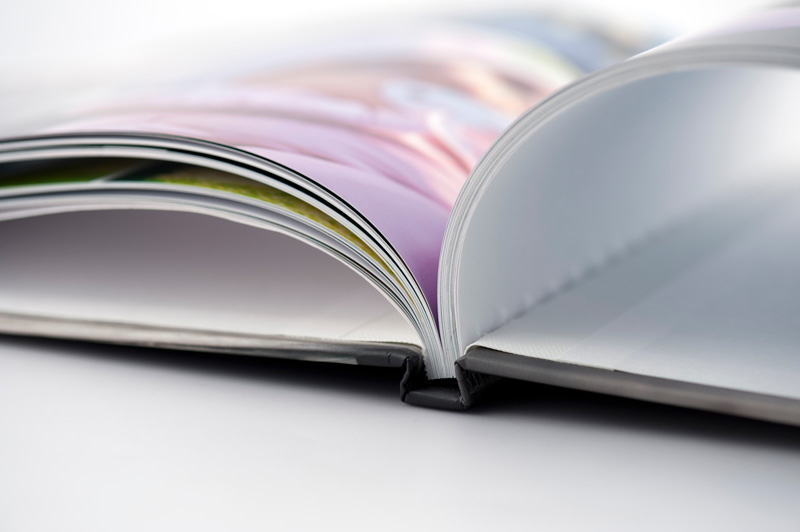
Advantages:
-
Durability and Longevity: Ideal for frequent use and preservation.
-
Customizable: Offers options for premium materials and personalization
Disadvantages:
-
Higher Cost: Reflects premium materials and labor.
-
Increased Weight: Impacts shipping and handling
Case Binding Is Best For:
Textbooks, coffee table books, and premium publications.
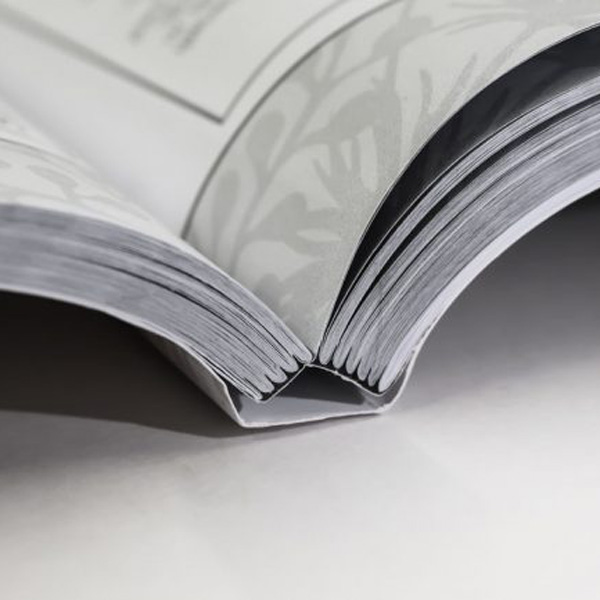
Otabind (Layflat Binding)
Otabind allows books to lay flat when opened, attaching the cover only to outer pages for a free-floating spine, ideal for high-end use like cookbooks.
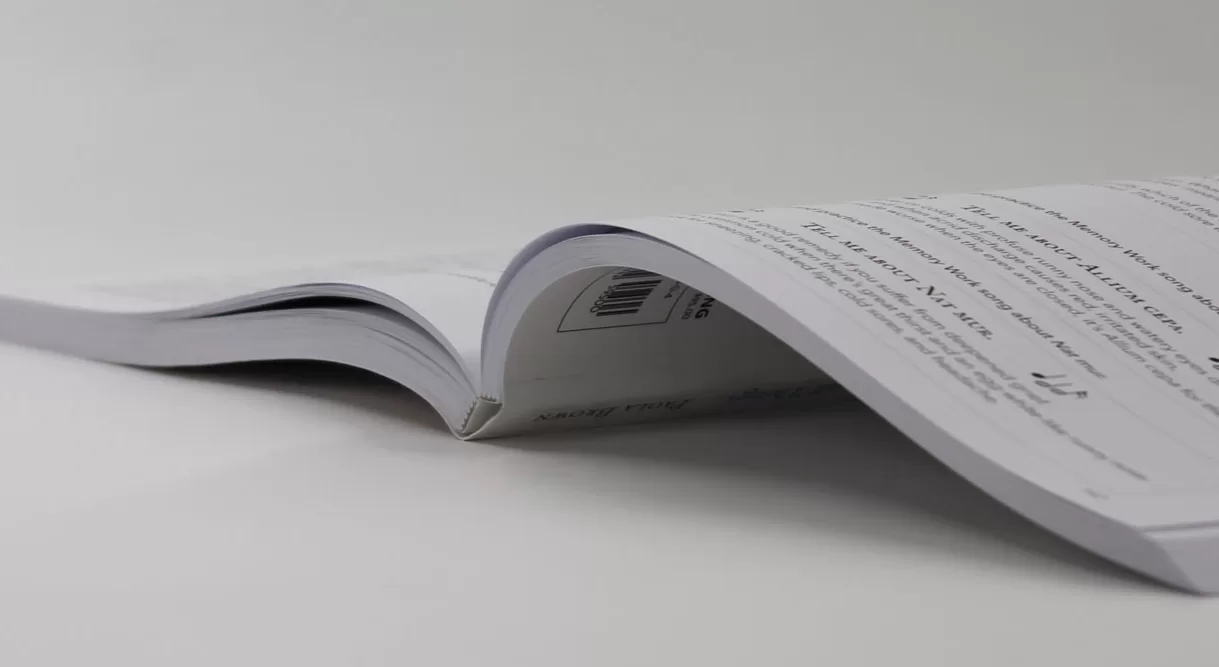
Advantages:
-
Enhanced Usability: Opens flat without damaging the spine.
-
Aesthetic Appeal: Distinctive, high-quality appearance.
Disadvantages:
-
Higher Cost: Due to complex binding process.
-
Longer Production Time: Requires more intricate assembly.
OTA Binding Is Best For:
Cookbooks, manuals, atlases, and books requiring frequent use.
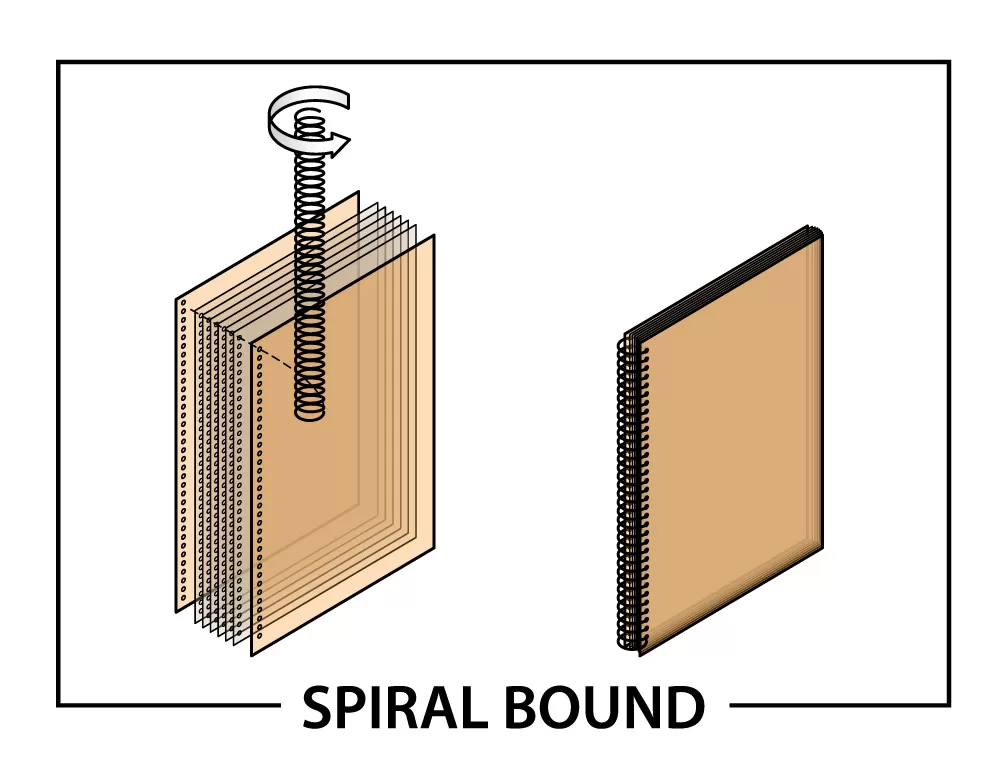
Spiral Binding or Wire-O Binding
Spiral binding uses a plastic coil or double wire (Wire-O) threaded through punched holes, offering flexibility and durability for workbooks and reports.
Options:
-
Plastic Coil: Flexible and durable, ideal for manuals and cookbooks.
-
Wire Binding: Professional finish for presentations.
-
Double Wire (Wire-O): Sleek and strong, great for notebooks and planners.
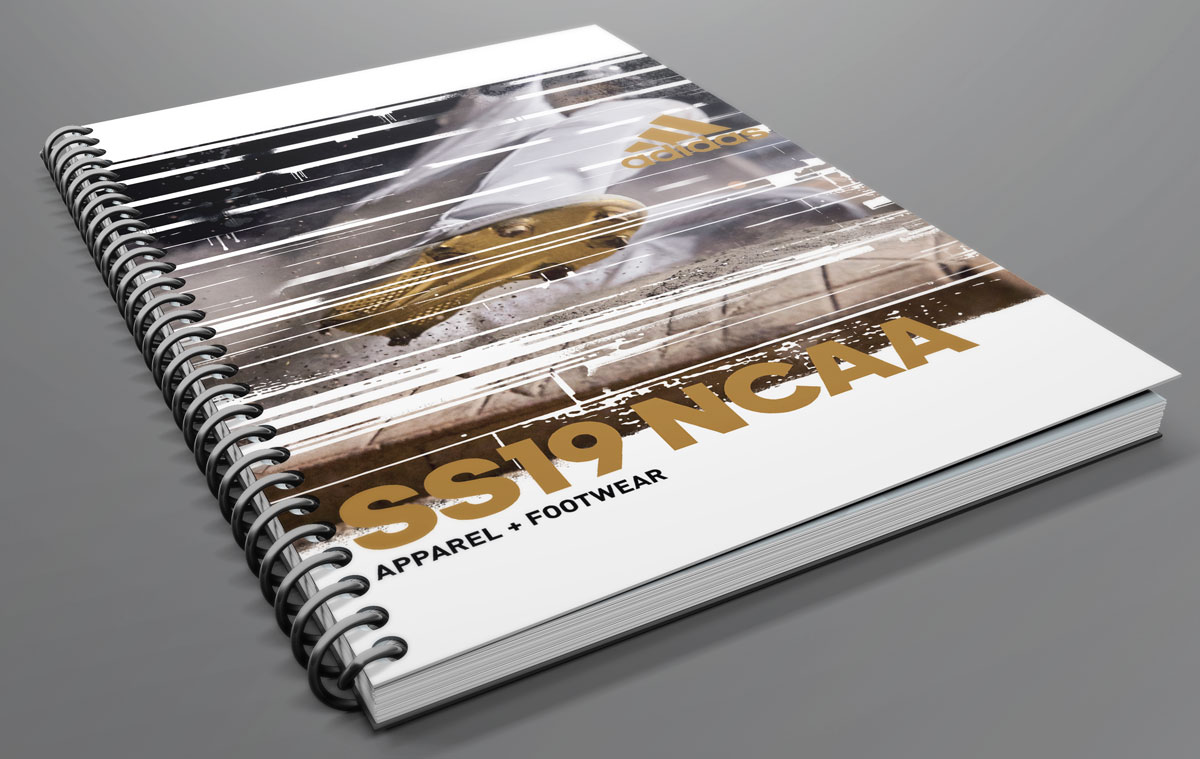
Advantages:
-
Flexibility: Available in various colors and materials.
-
User-Friendly: Lays flat and folds back for ease of use.
Disadvantages:
-
Perceived Informality: May not suit formal publications.
-
Durability Concerns: Less rigid than other bindings.
Spiral Binding Is Best For:
Workbooks, cookbooks, calendars, presentations, and reports.
How to Choose the Right Binding Type
Selecting the best binding depends on your project’s needs. Consider these questions:
-
How many pages does your book have? Saddle Stitch is best for up to 64 pages; Perfect Binding for 24+ pages.
-
Does it need to lay flat? Otabind or Spiral Binding are ideal.
-
What is your budget? Saddle Stitch and Perfect Binding are cost-effective; Case Binding is premium.
-
How durable does it need to be? Case Binding offers maximum durability.
-
Is appearance important? Perfect Binding and Case Binding provide a professional look.
For small, budget-friendly booklets, choose Saddle Stitch. For novels or catalogs, Perfect Binding is ideal. For premium or frequently used books, consider Case Binding or Otabind. Spiral Binding suits interactive documents like workbooks.

Binding Sytle Comparison Chart:
|
Binding Type |
Page Count |
Cost |
Durability |
Lay Flat |
Best For |
|---|---|---|---|---|---|
|
Saddle Stitch |
Up to 64 |
Low |
Low |
Yes |
Booklets, brochures |
|
Perfect Binding |
24+ |
Medium |
Medium |
No |
Novels, catalogs |
|
Case Binding |
Any |
High |
High |
No |
Premium books, textbooks |
|
Otabind |
Any |
High |
High |
Yes |
Cookbooks, manuals |
|
Spiral/Wire-O |
Any |
Medium |
Medium |
Yes |
Workbooks, presentations |
